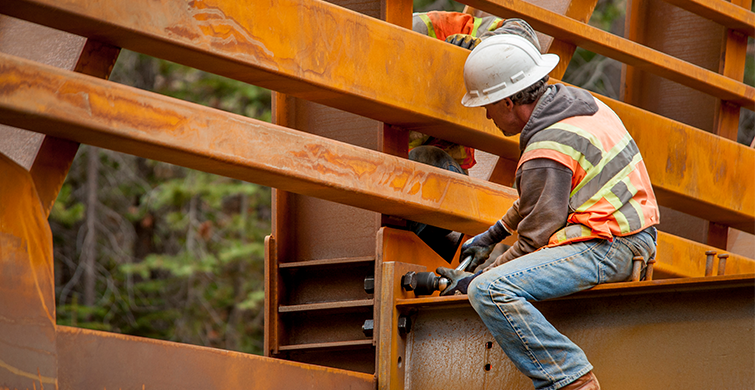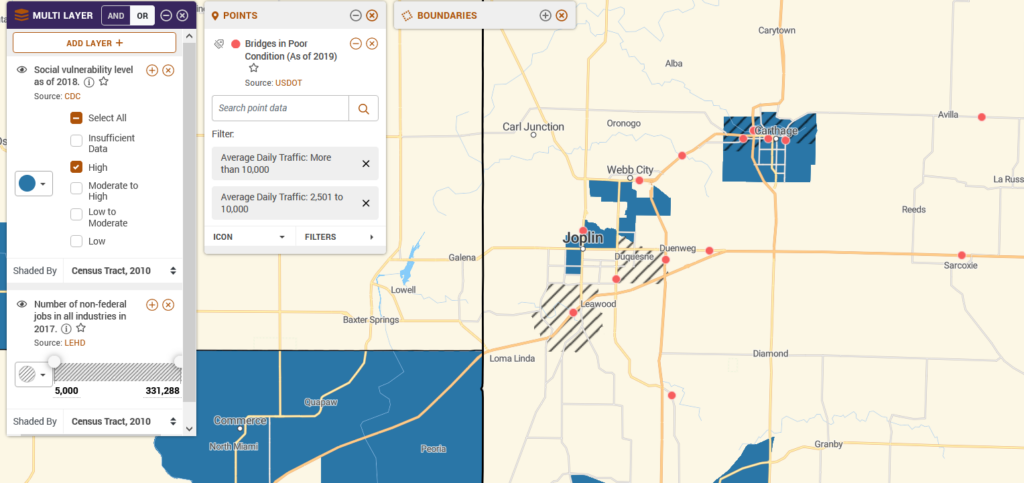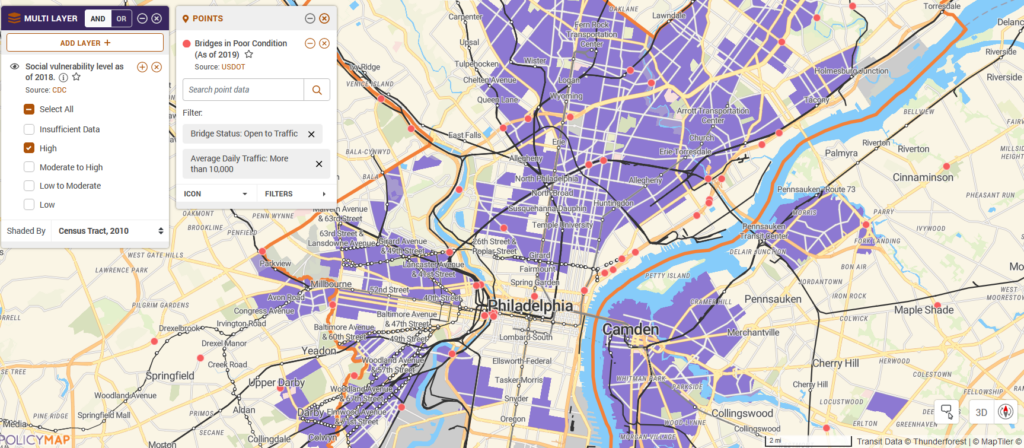Fix a Bridge, Connect a Community

Data
Bridges in Poor Conditions (As of 2019)
Source
U.S. Department of Transportation
Find on PolicyMap
- Economy
- Infrastructure
- Transportation
- Infrastructure
The American Rescue Plan (ARP) is a $1.9 trillion package signed into law in mid-March designed to help the country fight the COVID-19 virus and help the people, businesses, and localities most harmed by the repercussions of the pandemic.
Of this package, $350 billion is directed to states, counties, local governments, US territories, and tribal governments. Given the wide-ranging impacts of COVID-19 across the nation, this funding is directed to numerous local needs ranging from accelerating vaccination roll-out, reopening schools, and fixing our infrastructure. The ARP intends to help jurisdictions make necessary investments in water, sewer, and broadband infrastructure, as well as support infrastructure related to public health and nutrition services. The President’s American Jobs Plan proposes further investments in the country’s infrastructure.
Given these opportunities to invest in our communities, jurisdictions should consider deploying these dollars strategically to achieve a broader impact – not just spend dollars on a to-do list of projects. The severity of what households and businesses have endured over the past year calls for something larger than business-as-usual. And this kind of strategic decision-making should be guided by relevant data about the nature of the places in which we all live.
To simply manage during these times required households to have “access” to everything from the internet, to health care, to virtual classrooms, to transportation. The pandemic exposed the magnitude of disparities across communities in the US, with large portions of the country lacking access to many of these pandemic-era necessities.
Jurisdictions should be strategic in how they use ARP funding or the potential Jobs Plan funding to ensure that fixing a bridge, for example, transcends just spending dollars for concrete and girders. Bridges serve as connectors between communities, their people, resources, and jobs.
According to the American Society of Civil Engineers, 46,000 bridges or 7.5% of the nation’s bridges are in poor condition. Many are structurally unsound. Prioritizing the repair of those bridges that enhance connectivity for communities could support a broader, long-term economic impact.
A jurisdiction might consider prioritizing bridges in poor condition with high volumes of traffic located in socially vulnerable areas and proximal to job centers as a means of ensuring an ongoing, reliable connection between the two. The map below shows bridges, as red dots, connecting two job hubs in Missouri with vulnerable populations. Investment in bridges like these may have the additional benefit of improving the economies of these vulnerable communities.

In more urban areas, jurisdictions could also prioritize improving bridges that support transit lines. By focusing on bridges that have high daily traffic numbers, that sit within socially vulnerable areas, and that support a transit line, jurisdictions can identify bridges in disrepair in transit-dependent communities. The map below shows vulnerable communities with transit lines supported by bridges in poor condition in Philadelphia.

Bridges are simply an example. Every funding program in the ARP should be guided by a set of data designed to prioritize investments in a way that creates the broadest impact possible. While politics, community engagement, local development priorities, and cost will always play parts in how we prioritize investment, relevant data about place needs to be incorporated into the process.